Transiberian
M y husband Tom and I spent our 50th wedding anniversary in a yurt in the Gobi Desert where the temperature was -30 degrees Fahrenheit! In case you ever desire to do the same, here is the story.
Our normal travel custom is to take an annual 4-to-5 week trip to someplace strange in the January/February time frame. That time of year is slow at our farm and is also the off season for many travel destinations. 2017 was special because it was our 50th wedding anniversary. We had always said we would celebrate that anniversary on the Orient Express, but that train trip has changed quite a bit from the past. The main route of the Orient Express today is only a two-day trip from Paris to Venice, not long enough in time or distance covered for us.
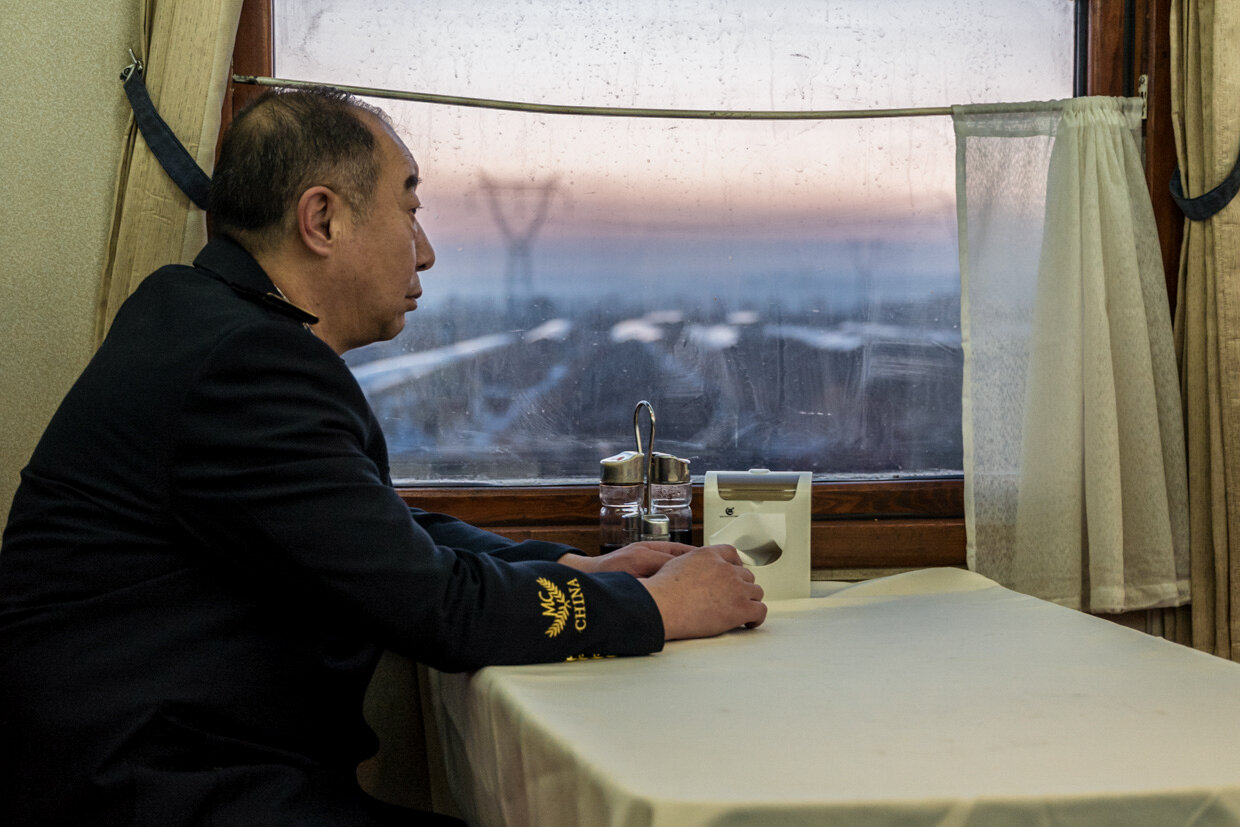
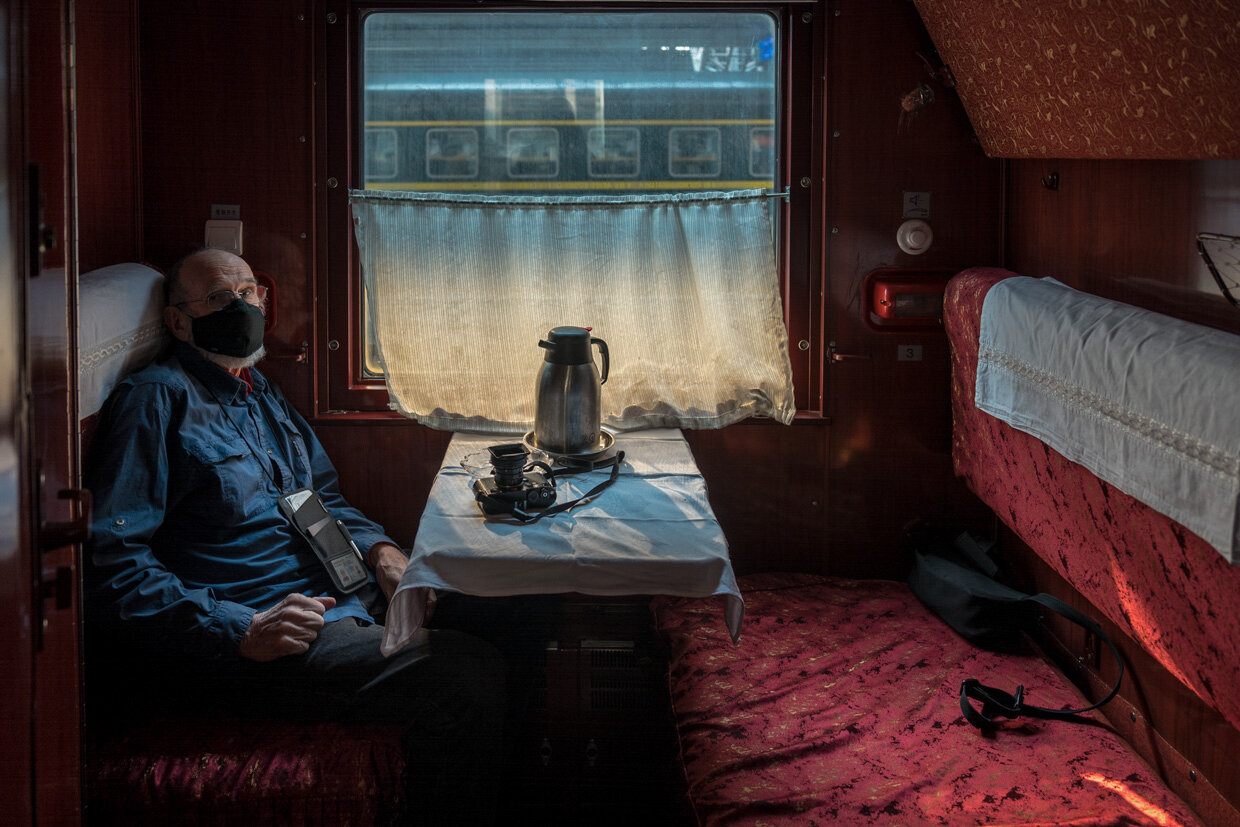
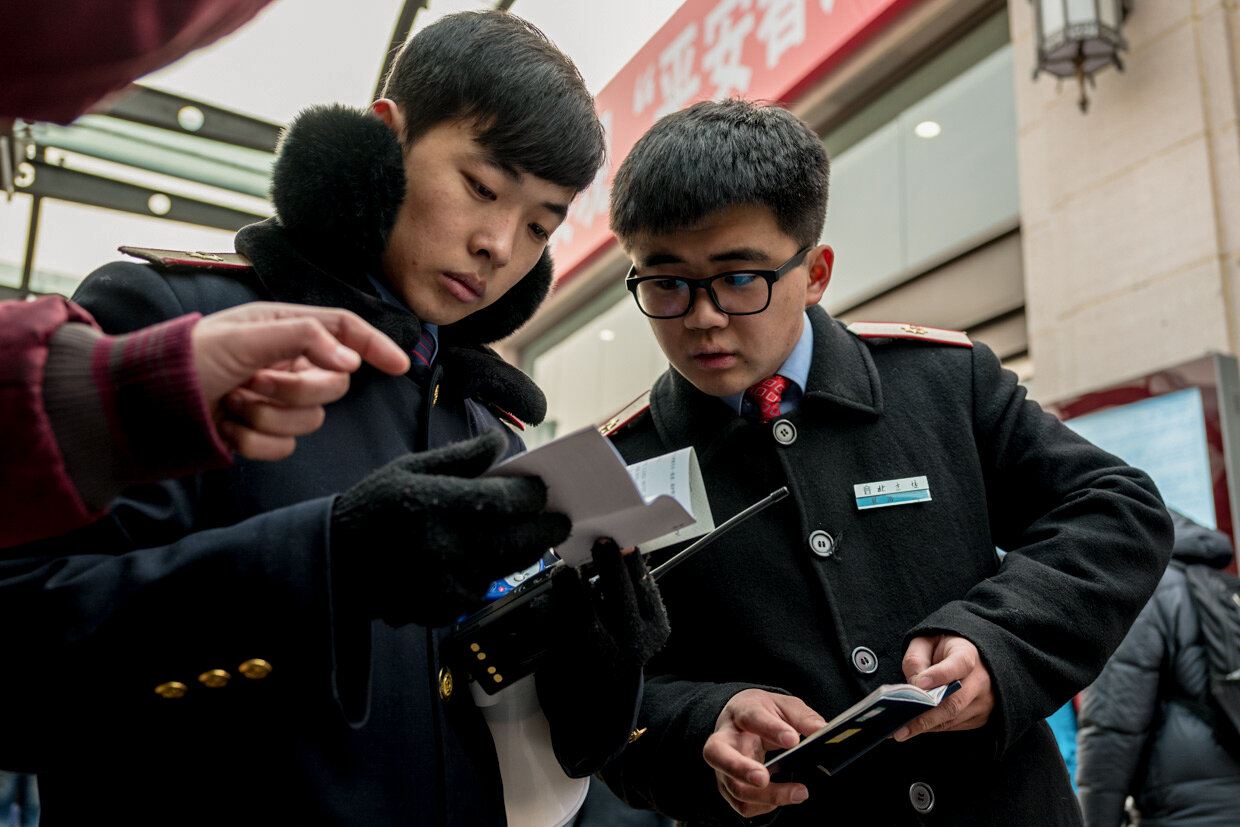
We chose instead the Trans-Siberian Railway from Bejing to Moscow, a journey of some 4,800 miles and requiring six nights if you go straight through. We wanted to spend a month traveling through China, Mongolia, and Russia with many overnight stops for exploration and photography. We found a travel agency in England that planned the whole trip for us with guides meeting us along the way. It is not one luxury train, but many ordinary connections that local commuters use. We would never have been able to figure out the Russian train time tables on our own!!
Normally we travel light with nothing but carry-on luggage – one rolling suitcase with all of our clothes and one rolling camera bag with my photography equipment. This time, the packing was complicated by the fact that we had to carry heavy coats, boots, mittens, and hats for the extreme cold. We solved that by wearing all of the winter clothes! In my camera bag, I carried my Leica SL with the SL 24-90 and the 50/1.4, the Leica M (Typ 240) with the 24/.28 and the 35/2.0, and the M Monochrom (Typ 246) with the 50/1.4. External hard drives, extra batteries, lots of SD cards, and a laptop filled the rest of the bag.
Arriving in Beijing, we were blessed with a weather front that had completely blown all the smog out of the city. At the hotel we asked for a room as high as possible which can sometimes get you above the low level smog. As soon as we could, we headed out for my favorite type of photography – walking the city and taking photographs of the people. We were close to Temple of Heaven Park, which we knew from prior visits would be filled on a Saturday morning with people dancing or playing music, dominos, cards, xiangqi (Chinese chess); the opportunities for my kind of photography were endless. Our lunch was street food, a Chinese pancake cooked on an open grill. We had stopped to watch and take photos and a customer, noting our interest, insisted on buying one for us. People everywhere were friendly and helpful.
Over the next couple of days, we explored the Great Wall and visited the Summer Palace, Forbidden City, and Tiananmen Square. The weather had changed and the smog was back. The air quality index had gone from 25 to almost 300 and you could see, feel and taste the pollution. The masks which we brought with us were essential. My favorite photos were still of the people in the park.
Our Trans-Mongolian train left Beijing’s main train station on 25 January, a couple of days before Chinese New Year and the station was crowded but our train was not. A slight complication of our tickets and passports not matching was solved quickly by our local guide. Our accommodation on the train was a four-berth compartment but we were the only occupants. Two bathrooms were at the end of the car. We ate dinner in a Chinese dining car, featuring a stir fry with rice eaten with chop sticks which was quite good.
At 1:30 or so the next morning we arrived at the Chinese border town of Erlian, which is a long stop because each carriage must be lifted off the Chinese gage wheels and replaced with wheels that fit the wider Mongolian and Russian lines. All of this and passport formalities to exit China took about three hours and was done while we remained on board in our car. Formalities to enter Mongolia were next and again we stayed on-board.
We lost our Chinese dining car at Erlian and it was not replaced for the next leg of the trip so the next morning we were on our own. This breakfast, which came out of our suit case, was one of our favorite meals. Boiled eggs, nuts, fresh and dried fruit along with tea. Hot water for the tea was provided from a samovar at the end of the car that the conductor kept hot all the time on his coal-fired boiler. Then, the best part – at a stop Tom got off and bought meat pies called Buuz from a little old lady on the platform. She had made them at home and brought them to the station to sell. Five pies for about $2.50 and they were really good!


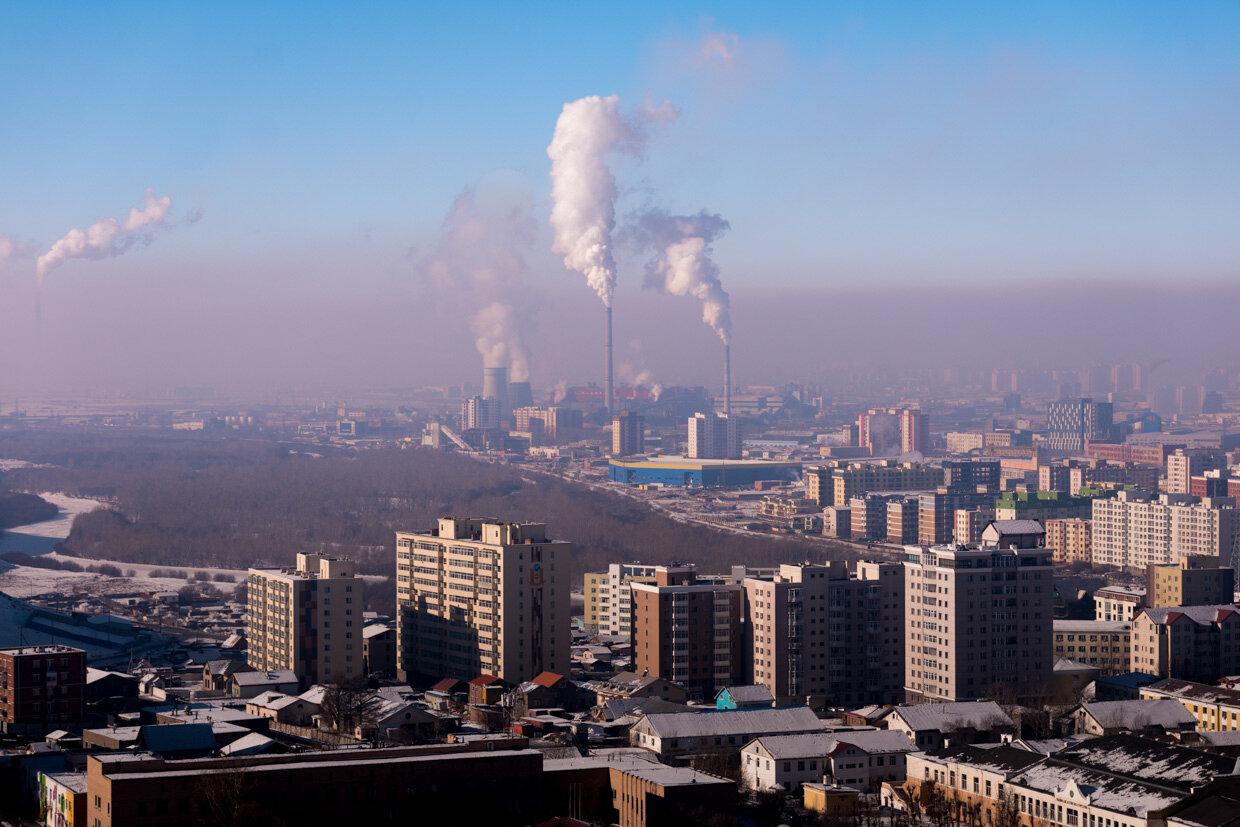
The scenery outside the train was the Gobi Desert, an open arid brown expanse dotted with nomads, yurts and camels. We were in the middle of the Gobi Desert but don’t think sand – think high desert country in the western US with lots of scrubby grass, wind, and freezing temperatures.
We arrived in Ulan Bator in mid-afternoon where we were met by our guide Muuggi, who helped us explore the Southern and Middle Gobi for a few days. While we had an itinerary of tourist sites to see I explained immediately to Muuggi that I wanted to see, meet and photograph the people of the Gobi. Any tourist destination could be skipped if there were opportunities to meet and photograph people. He understood immediately.
There was a lot of snow and it was cold when we arrived, about- 4 F, and -30 F at night but the humidity was low. Air pollution here was even worse than in Bejing. The next morning, we were glad to be leaving the most polluted capital city in the world.
For the next five days we roamed the Middle and South Gobi, and Muuggi made sure we met as many people as possible. He would stop at a nomad’s yurt in the middle of nowhere and ask if we could come in and talk to and photograph them. No one refused and all offered hospitality including fermented camel’s milk, fried dough and the traditional passing of the snuff bottle. He found a local winter festival on a frozen lake with wrestling, ice bowling, and rope pulls. We were the only non-Mongolians there. It was a photographer’s paradise, in spite of the extreme cold.
Russian Old Believers’ village in the Buryatia region of Siberia.
Back in Ulan Bator we made an unscheduled stop at the International Hospital where Tom was diagnosed with pneu- monia caused by too much air pollution! The doctor wanted to hospitalize Tom for three days, but after a lot of discussion, she agreed that the best treatment might be to get out of the city pollution where the air quality index that day was almost 400. She loaded Tom up with antibiotics, and that afternoon we got on the train headed for Ulan Ude in Russia which was two days travel time away.
The flat, scrubby grassland continued until we reached the Mongolian/Russian border late on 02 February. Our car was the only one continuing and we were shuttled to a side track and left sitting for hours while they sorted everything out. All passport formalities leaving Mongolia and entering Russia were again handled on board.
The highlight of our time in Ulan Ude was a visit to the Old Russian Believer’s Village of Buryatiya, a traditional village of religious dissenters that have suffered through 500 years of persecution and exile, still clinging to their traditional way of life. To be sure, this is a tourist village complete with traditional painted houses, museum, and church but did not seem so since we were the only tourists there. In the community center, we enjoyed traditional dancing and polyphonic singing, and a smorgasbord of traditional food with unlimited home- made liquor made from cedar berries. After several glasses, we danced with the ladies and they dressed us in traditional clothing so we could participate in a traditional wedding ceremony. Maybe this one will last another 50 years!
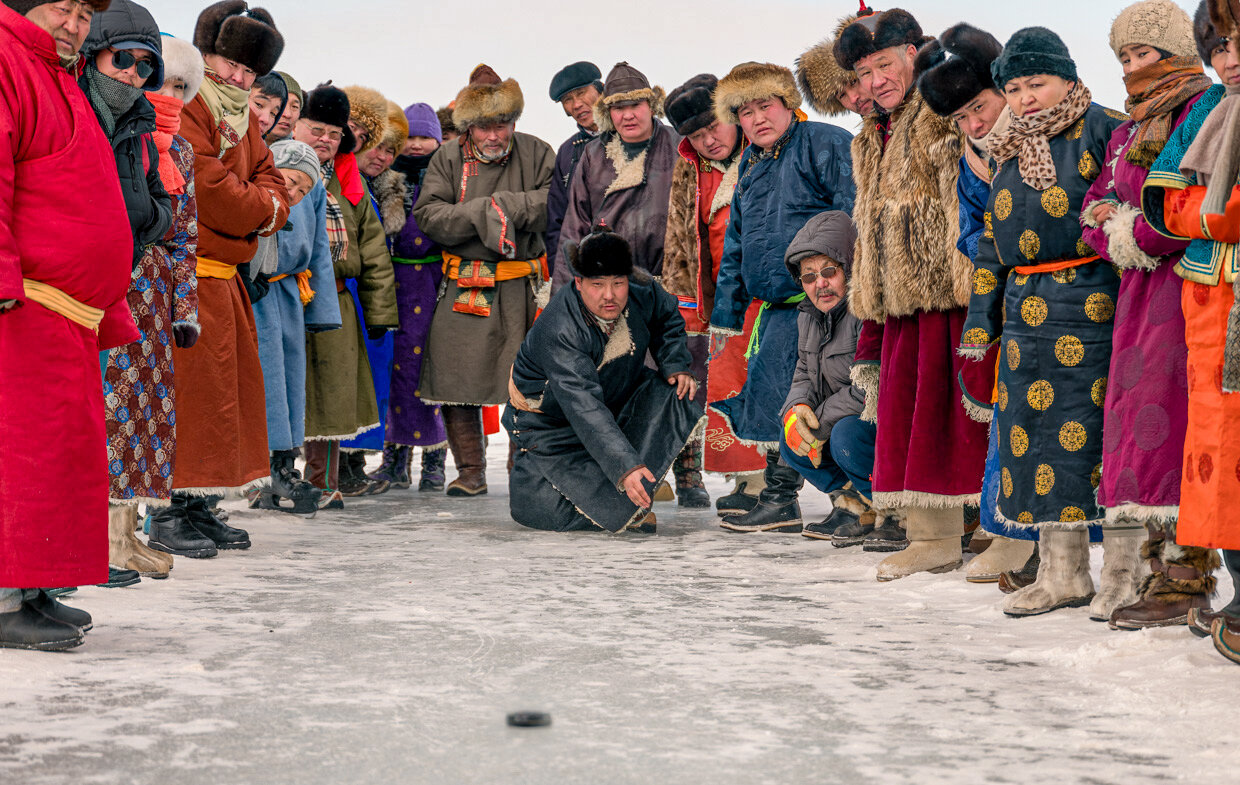

Back on the train, our next stop was Irkutsk where we enjoyed an ice park, and overnight excursions to Lake Baikal. Then back on the train for a four-day crossing of Russian Siberia into Moscow. The train stopped frequently for 5 to 30 minutes, long enough to stretch your legs, buy food from station vendors and to take a few photographs. We had to stay close to the train because it leaves on schedule with or without you! The terrain here is forested with Silver Birch broken by occasional river crossings, wooden villages, onion domed churches, with small and large industrial cities and lots of snow.
We spent three days in Moscow doing what I love to do best, walking in Red Square, Gorky Park and just walking the streets. The photography opportunities were endless.
Then it was back on the train, this time an express from Moscow to St. Petersburg, a trip of about four hours. St. Petersburg is a great pedestrian city and our centrally located hotel again allowed me to walk the streets to the Hermitage, museums, the waterfront and sometimes just aimlessly walking. My best photographic experiences have always been serendipitous, and walking always puts me in the middle of what is happening. All in all, our Trans-Siberian Railway trip was an unforgettable experience that I would recommend to anybody interested in travel, trains, photography, and people.

